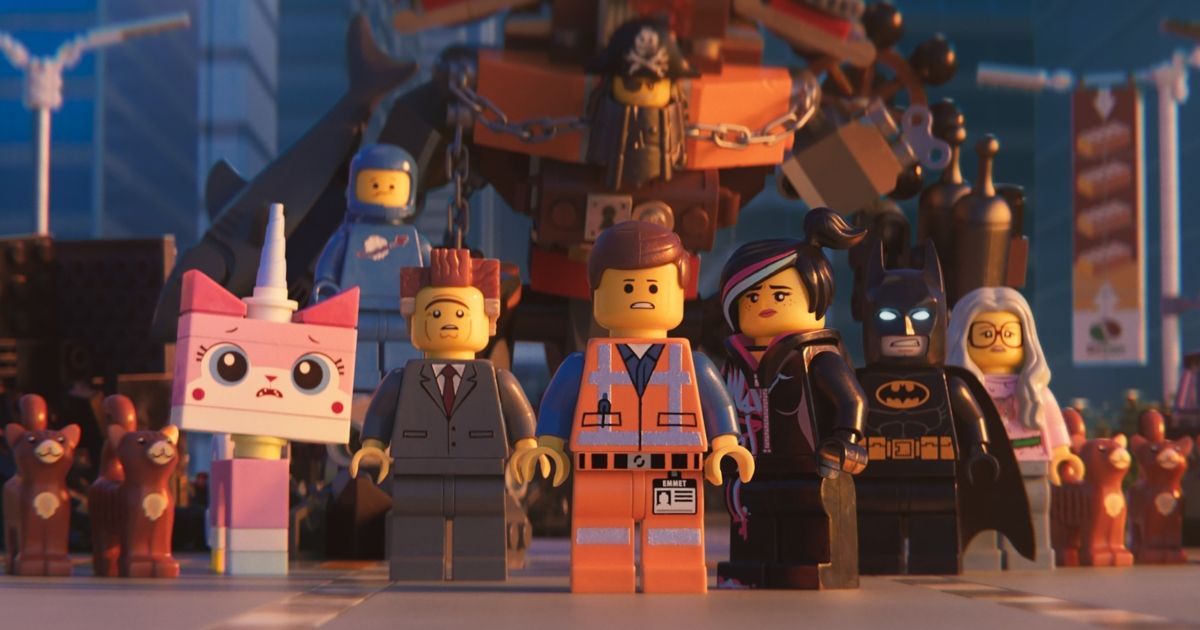Summary
-
The Lego Movie
success prompts Universal deal. 5-year plan for new films after pause in original installment. - Over-saturation led to decline in box office receipts. Positive viewer feedback but need for fresh ideas.
- Focus on animated content and reality TV projects. Shelving of planned Billion Brick Race, Lego Superfriends.
The Lego Movie franchise has come to a surprising halt despite its staggering $1.1 billion success. Five years after the conclusion of the original series, Jill Wilfert, a key executive at Lego, offers a candid explanation for the decision to end the franchise and hints at a new iteration in the works.
Lego Movie
- Release Date
- February 6, 2014
- Runtime
- 100
- Studio
- Warner Bros. Pictures
- Tagline
- Assembling in 2014
Despite its impressive performance, Lego opted to transfer the franchise rights to Universal in a contract lasting five years. Wilfert, the head of global entertainment at Lego, sheds light on this decision in a recent interview with Variety. She admits that the studio may have pushed too many films in quick succession, leading to a decline in box office performance despite continued positive reviews. Wilfert stated,
“In hindsight, we would probably say we had too many films too close together. All those movies did get good reviews. If you even look back to “Lego 2”, the reviews were better than the box office might indicate.
I think people that did see it really did enjoy it. But really, in the film industry, it’s tough. I think you have to bring something unexpected to the table.
And for us, going through that timeframe we felt like it was the right time to maybe take a little bit of a pause, re-evaluate what we’re doing.”
The original series kicked off in 2014 with the release of The Lego Movie, directed by Phil Lord and Christopher Miller. The film was an unexpected hit, grossing over $468 million and receiving a 96% approval rating on Rotten Tomatoes. This success led to the creation of three more movies, each contributing to the franchise’s monumental financial achievement.
Watch MovieWeb’s Top Highest-Grossing Animated Movie Franchises video below:
The franchise’s critical and box office performance paints a picture of its journey. While The Lego Batman Movie in 2017 maintained the momentum with a 90% Rotten Tomatoes score and a $312.1 million box office haul, the subsequent films, The Lego Ninjago Movie and The Lego Movie 2: The Second Part, saw a dip in both critical acclaim and financial success.
Beyond the Big Screen: Lego’s Diverse Ventures and Unseen Projects
The decision to pause and re-evaluate was not solely based on the cinematic aspect of the franchise. Lego continued to thrive in the serialized content space, creating animated content tied to the franchise. Additionally, the company found success in reality-style television with Lego Masters, further expanding its entertainment portfolio. Wilfert shared:
“In addition to the films, we also have been very active in the serialized content space, so we continue to create content tied to these properties. So we really, at that point, focused on continuing to fuel our franchises with animation and then go into a new space with more reality-style television with “Lego Masters”, which has been hugely successful for us.”
The end of the original Lego Movie franchise also meant the shelving of several planned projects. The Billion Brick Race, a spinoff inspired by racing movies, and Lego Superfriends, a sequel to the Batman spinoff, were among the projects that never saw the light of day due to the franchise’s conclusion.

Why The Lego Movie Franchise Needs to Come Back
The LEGO Movie easily ranks among the best animated films of the 21st Century. Here’s why it should return with another sequel.
As the Lego Movie franchise looks to its future with a new iteration in development at a different studio, fans can only wonder what’s next for the beloved brand. With the talented duo of Aaron and Adam Nee at the helm, there is hope for a fresh and entertaining chapter in the Lego cinematic universe.



